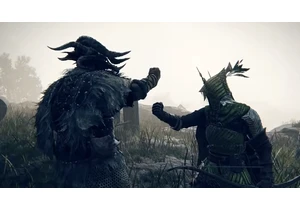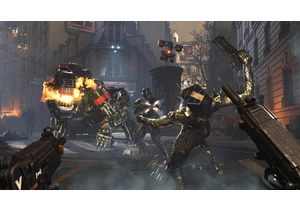The best Nintendo games do two things. The first is introducing a delightful gaming mechanic — take Ultrahand in The Legend of Zelda: Tears of the Kingdom or Cappy in Super Mario Odyssey for some recent examples. The second is building a world around that mechanic for players to explore. Obviously games are more than one specific tool, and building a compelling game around a good mechanic is no small task. But when it all comes together, look out. You’ve got a game that people will remember for years, if not decades.
It’s a little early in the Switch 2’s lifecycle to say definitively that Donkey Kong Bananza is a game of that caliber, but after playing it for the better part of a week I can say that the “smash everything” mechanic that defines its gameplay is an absolute delight. And, just as importantly, Nintendo built a wonderful world around it, completely with varied levels and obstacles, charming characters, bizarre and delightful enemies, some catchy tunes and just enough challenge to keep it interesting. 3D platformers aren’t even my favorite game style — I prefer Super Mario Wonder over Odyssey, and I love the various Donkey Kong platformers going back to the SNES days. But Bananza makes consistently good use of every dimension you can play in, and it’s the kind of game that I’m going to keep exploring long after I roll credits.
To back up quickly: Bonanza introduces us to Donkey Kong and his smashing skills in a somewhat lengthy tutorial where you bust through a mine looking for gold. This sequence involves mashing the Y button to bust up the rocks around you and collect all the treasures that are revealed. DK can jump, climb many surfaces, rip up pieces of the terrain to throw and pound the ground to quickly collect treasure, but the main thing you’re doing here is smashing. Smashing as much as possible. You can smash above you, below you and in front of you, and you can smash almost any surface you encounter (the game helpfully makes it obvious when a surface is impervious to DK fists.)
At first, I thought I was going to get tired of all the smashing — the tutorial made it feel like mindlessly mashing Y was going to be all I was going to do in the game. But then the expected villain appears, stealing the Banandium gems (just go with it) and DK is compelled to dive deeper and deeper into the crust of the planet to get his bananas back. Once that happens, the game truly reveals itself: each “world” you need to clear is a layer of the planet, but this being a Nintendo game none of the rules apply. Lagoon Layer is up first, and there’s clear blue skies, water everywhere and varied terrain to explore (and smash). Residents of each layer will direct you to help clean up the trouble wrought by the three Kong creatures who make up VoidCo, the dastardly antagonists who stole the bananas.
Bananza is good about guiding you from goal to goal while also giving you tons of freedom to explore and navigate the layers in any way you see fit. My guess is that the first thing you’ll do is smash everything in sight. The smash mechanic on its own in the tutorial level didn’t feel all that exciting, but putting it into the context of beautifully crafted 3D worlds to explore makes it an absolute delight. You can basically go anywhere you can see, and you can smash nearly anything the game puts in front of you.
It’s hard to pinpoint exactly what makes smashing so satisfying, besides the obvious and undeniable fact that destruction is fun. But the combination of visual, haptic and audio cues combine to make it something that absolutely does not get old despite my initial reservations. The crunch of smashing through rocks and mountains just feels different than when you’re pounding your way through dirt or splintering giant trees. And smashing also equals exploration — if you see a mountain you can just pound your way into it to find gold, fossils (that you can exchange for upgraded costumes), power-ups and, most crucially, Banandium gems.
The Banandium gems are similar to the stars or moons or whatever else other 3D platformers have you collect as you explore. Some you’ll get naturally as you progress through the game and defeat various bosses, but there are dozens hidden around each layer that you’ll want to seek out, as getting five gives you an upgrade point. Those you can use to add more health, and upgrade DK’s various skills (like being able to smash through tougher terrain). There are also little hidden challenge levels that throw some tough platforming or timed battles at you with multiple bananas as a reward. There are a ton of ways to find bananas, and tons of them scattered around the various levels. I’m not exactly rushing through the game (there’s so much to smash, you see), and I don’t think I’ve found more than half of the bananas in any of Bananza’s layers.
Donkey Kong Bananza is more than just smashing, though! I’d be remiss if I didn’t mention the game’s secondary protagonist, Pauline. It’s reasonable if you don’t know her by name; she’s the damsel in distress in the old ‘80s Donkey Kong games but more recently showed up in Super Mario Odyssey as the mayor of New Donk City who loves to belt out a tune. In Bananza, Pauline is a 13-year-old who was captured by the VoidCo crew but is rescued by DK early in the game. From there, she sits on your shoulder as you work together to achieve your ends: Pauline needs to get to the planet’s core to eventually get back to the surface and DK needs to get the VoidCo Kongs to get his Banandium gems back.
Pauline’s love of singing becomes a crucial part of the game, as her voice guides to checkpoints, unlocks hidden areas and, most importantly, activates various special powers that DK gains throughout the game. Multiple layers have delightfully ridiculous Elder animals presiding over them, including a giant ape, ostrich and zebra. Most of them have peacefully retired in their layers and have taken up DJing as a hobby; if you repair whatever damage VoidCo has caused, they’ll grant you a new Bananza power. The Kong power supercharges DK’s punches, while the Ostrich power lets you temporarily fly and float. Naturally, these powers end up being crucial to advancing in the game.
They’re all activated by different songs that Pauline learns, and those cut scenes are some of my favorite parts of the game. As a 13-year-old, she’s not exactly comfortable singing in front of the big crowds gathered by the Elders, but she gets over it, performs with gusto and starts a wild dance party. As with most Nintendo games in this style, Pauline doesn’t get a ton of character development — but watching her bond with DK and become more confident throughout her side chatter during the game is extremely sweet. One of my favorite moments in the game happens when DK takes a nap at the various hideouts you find to recover your energy. As the screen darkens for your nap, Pauline starts chattering about the world you’re in or the adventures you’ve had, and it all feels like a kid trying to talk to their parents to avoid falling asleep. She gets drowsy, starts making a little less sense and eventually nods off. It’s an unexpected and totally unnecessary (and optional) part of the game, but it really gives Pauline a personality.
I’m in the last stages of the game, and at this point I’m playing as much to see what happens with Pauline and DK as I am to keep smashing more things. That somewhat unexpected combo of heart and destruction has kept me engrossed in Donkey Kong Bananza for the last week, and there’s a ton of replayability that’ll likely have me starting a new run once I finish this one. There’s so much to explore, so many Banandium gems to find, so much to smash. It might not be the system-seller that something like Mario Kart World is, but it’s the first truly great game for the Switch 2.
This article originally appeared on Engadget at https://www.engadget.com/gaming/nintendo/donkey-kong-bananza-review-nintendos-latest-3d-platformer-is-an-instant-classic-143048108.html?src=rss https://www.engadget.com/gaming/nintendo/donkey-kong-bananza-review-nintendos-latest-3d-platformer-is-an-instant-classic-143048108.html?src=rssLogin to add comment
Other posts in this group

Elden Ring Nightreign is finally adding a two-player co-op mode on July 30. Prior to this, FromSof

VSCO, the photo filter and editing app that spawned an entire culture, has


Meta will stop allowing political advertising on its platforms in the European Union as of October 2025, blaming the EU’s new "unworkable" transparency rules for what it called a "difficult decisio

CRISPR gene-editing therapy has shown great potent

The annoying thing about coffee is that its ideal temperature is fleeting. Get caught up in a particularly lively debate in your morning meeting and by the time you return to your cup of joe, it’s

